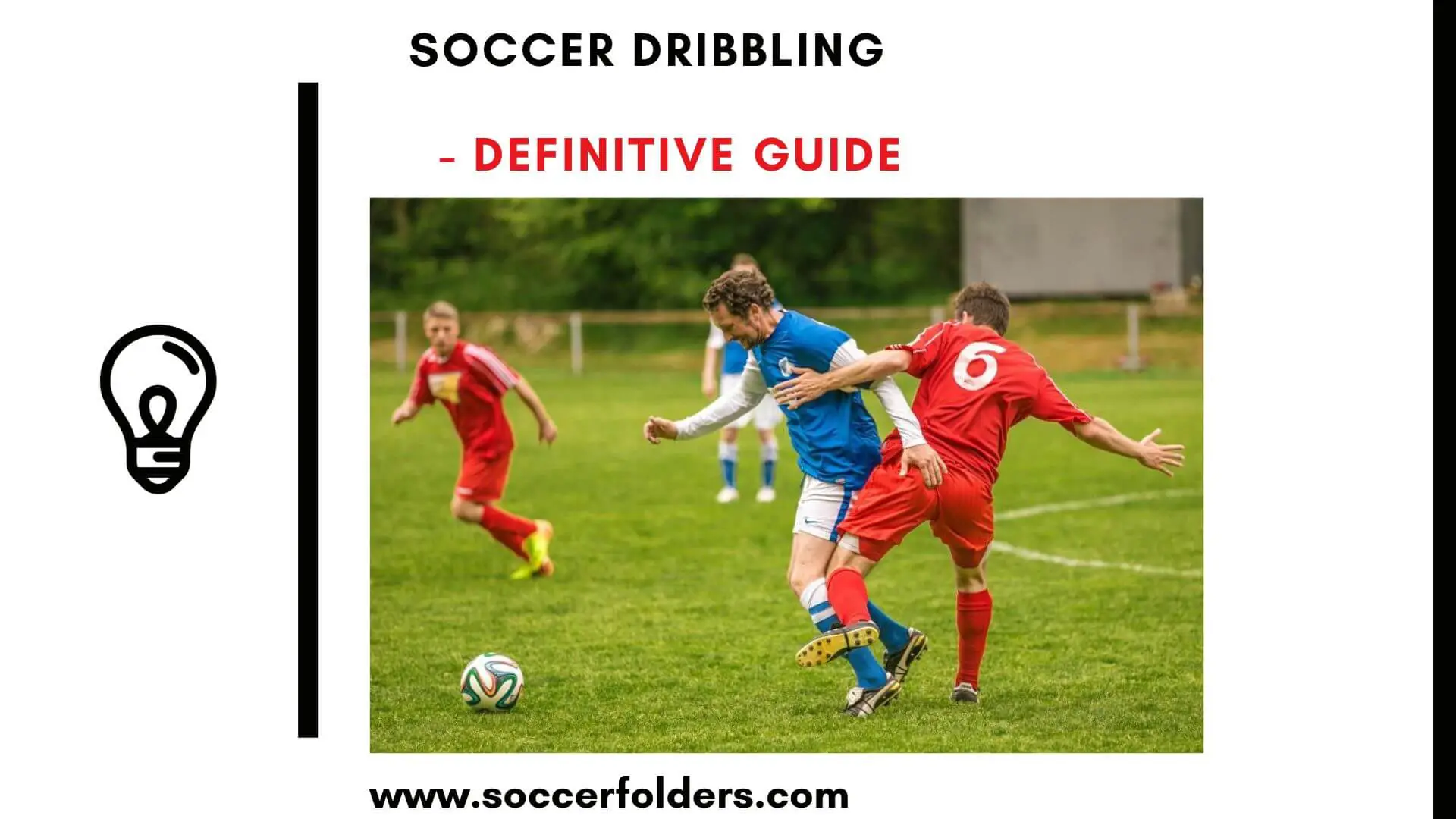Dribbling is one of the most important fundamental skills in soccer. The ability to confidently control the ball and take on defenders gives attacking players an essential edge.
This in-depth guide will cover everything you need to know about improving your soccer dribbling technique.
What is Dribbling in Soccer?
Dribbling in soccer is the process of using controlled touches to manoeuvre the ball around opponents. It requires close control, speed, agility, balance, and composure. Master dribblers can change direction swiftly, accelerate, and shield the ball from defenders.
Effective dribbling opens up space on the field, helps retain possession, relieves pressure, and allows players to beat defenders one-on-one.
While passing moves the ball quickly, skilled dribbling takes advantage of gaps in the defense. It creates goal-scoring opportunities and spectator excitement.
Understanding Soccer Dribbling
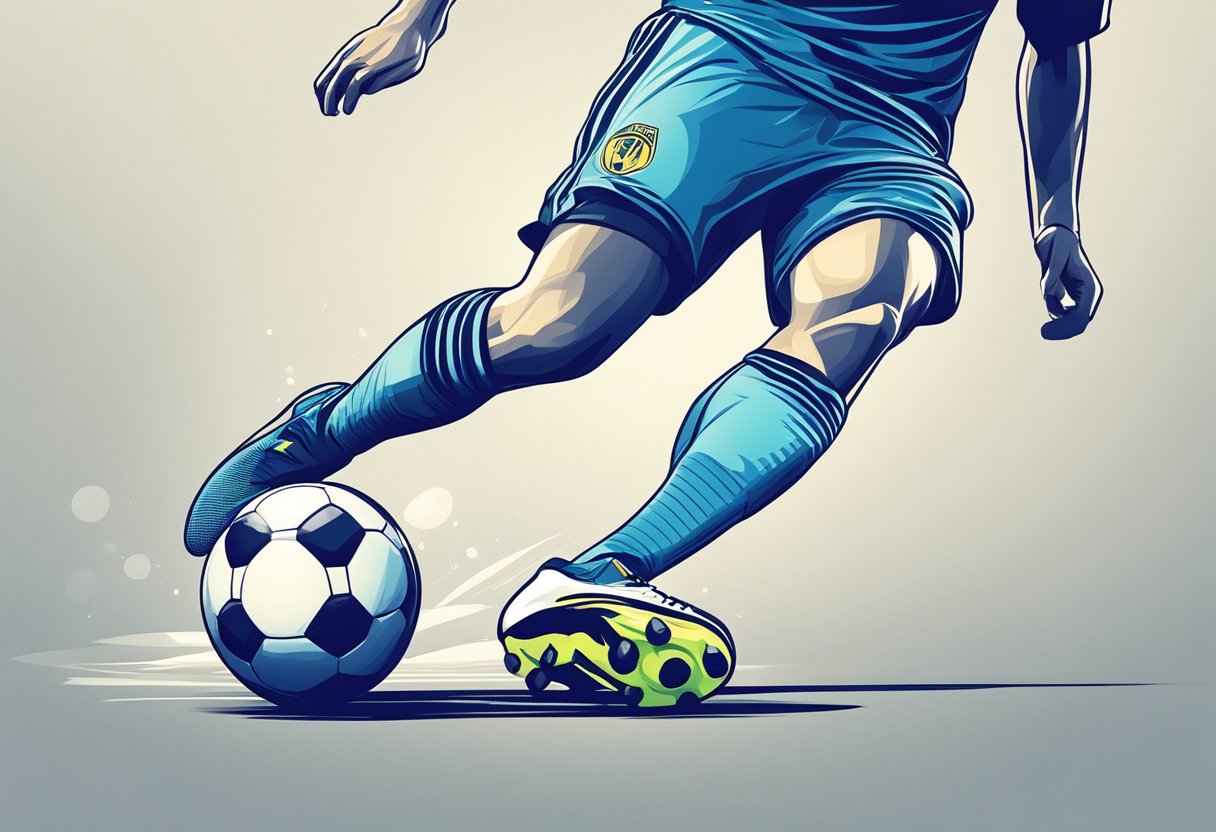
Dribbling is an essential skill in soccer. It allows players to move the ball past defenders and create scoring opportunities. As a beginner, understanding the basics of dribbling is crucial to improving your overall game. In this section, I will cover the fundamentals of soccer dribbling.
Footwork
The first thing to focus on when dribbling is your footwork. You want to use the inside and outside of your foot to control the ball. Start by dribbling the ball with the inside of your foot.
This will give you more control over the ball and allow you to change direction quickly. As you become more comfortable, start using the outside of your foot to dribble. This will help you keep the ball away from defenders.
Body Position
Your body position is also important when dribbling. You want to keep your body between the ball and the defender. This will make it harder for the defender to steal the ball from you. Keep your knees bent and your head up to maintain balance and be aware of your surroundings.
Awareness
One of the most important aspects of dribbling is awareness. You need to be aware of where the defenders are and where your teammates are. Look up and scan the field to find open spaces and passing opportunities. This will help you make better decisions with the ball.
Practice
Finally, the key to improving your dribbling skills is practice. Set up cones or other obstacles to dribble around. Practice dribbling with both feet and in different directions. The more you practice, the more comfortable you will become with the ball at your feet.
In summary, understanding the basics of soccer dribbling is essential for beginners. Focus on your footwork, body position, and awareness. Practice regularly to improve your skills and become a better player.
==>>You can also read my full article about the purpose of dribbling in soccer here.
Basic Techniques of Soccer Dribbling
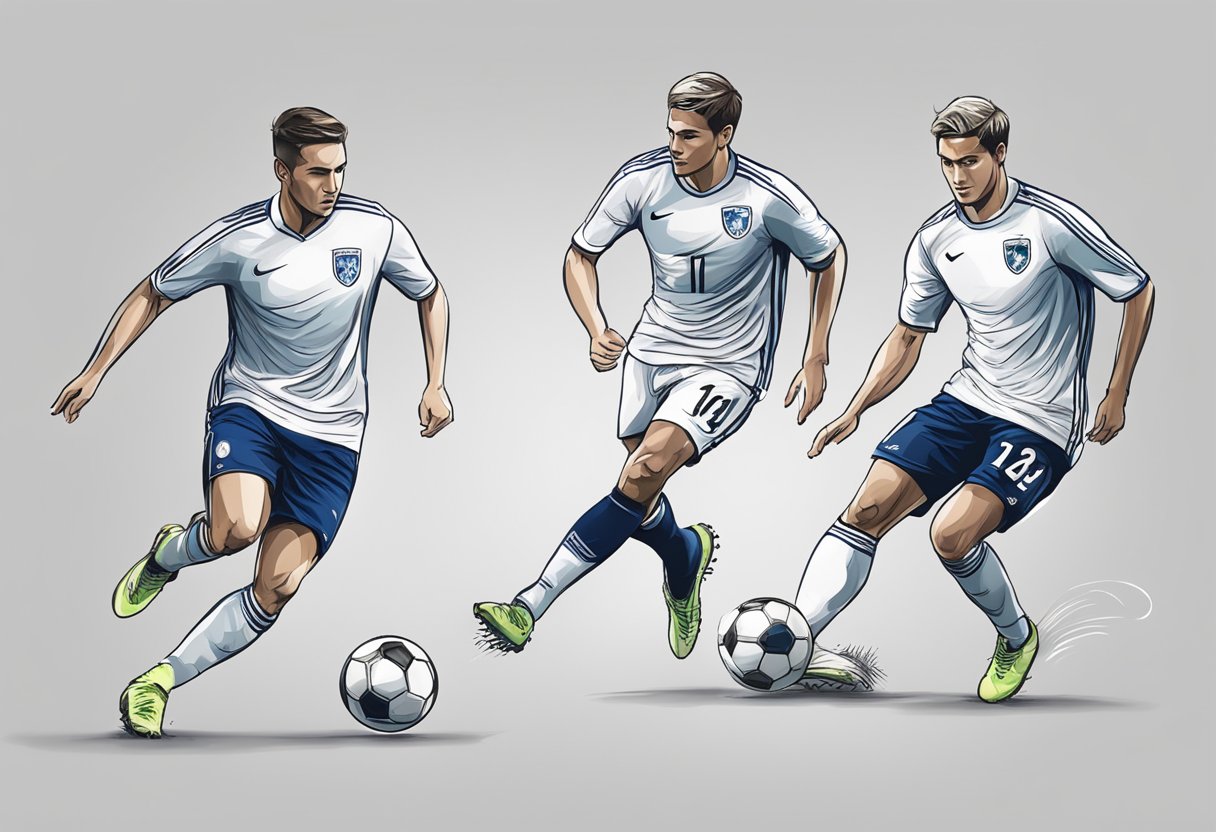
As a beginner in soccer, mastering the basic techniques of dribbling is essential. Dribbling is the art of manoeuvring the ball with your feet while moving around the field.
It is a critical skill that every soccer player must possess. Here are the basic techniques of soccer dribbling that you should master:
Shielding
Shielding is an essential technique in soccer that involves using your body to protect the ball from your opponent. To shield the ball, you should place your body between the ball and your opponent. This technique requires balance, strength, and good footwork.
You should keep the ball close to your feet and move it around your body to avoid your opponent’s tackles. Shielding the ball gives you time to assess your options and make the right move.
Changing Pace
Changing pace is another critical technique in soccer dribbling. It involves varying your speed to confuse your opponent and create space for yourself.
To change pace, you should start by dribbling the ball at a slow pace, then suddenly accelerate to catch your opponent off guard. Changing pace requires good control of the ball and quick footwork. You should also be aware of your surroundings to avoid collisions with other players.
Changing Direction
Changing direction is a technique that involves quickly changing the direction of the ball to avoid your opponent. To change direction, you should use your feet to move the ball in a different direction while keeping it close to your body.
This technique requires good footwork, balance, and coordination. You should also be aware of your opponent’s movements to avoid running into them.
Mastering these basic techniques of soccer dribbling will give you an edge over your opponents. Practice these techniques regularly to improve your skills and become a better soccer player.
Advanced Dribbling Moves
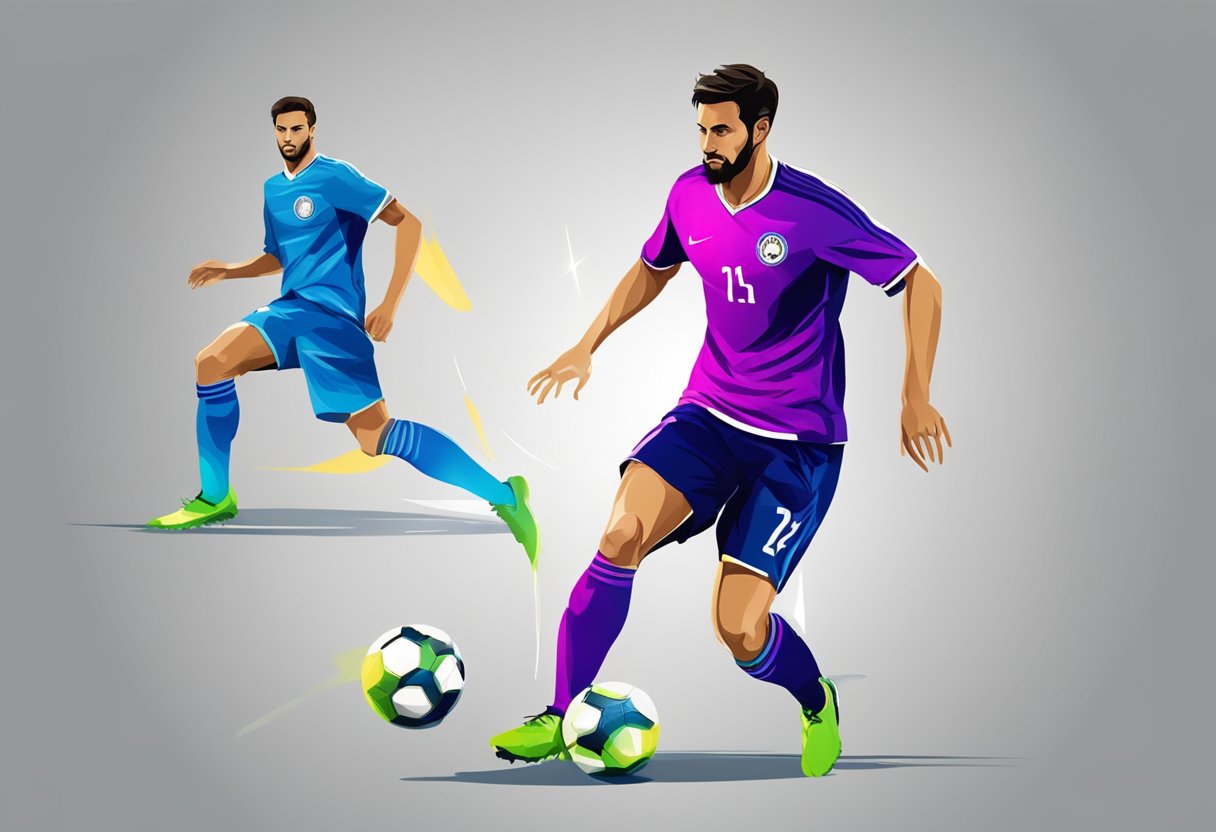
As I have mentioned earlier, mastering the basic dribbling moves is crucial for beginners. Once you have learned the basics, it’s time to move on to more advanced dribbling moves. In this section, I will cover some of the most effective advanced dribbling moves that you can use to outsmart your opponents.
Step-overs
Step-overs are one of the most popular and effective dribbling moves used by professional soccer players. This move involves pretending to take the ball in one direction, but instead, you quickly shift your weight and take the ball in the opposite direction. To execute this move correctly, you need to be quick, agile, and have good coordination.
Cruyff Turns
The Cruyff Turn is another advanced dribbling move that is very effective in confusing defenders. This move involves faking a pass or shot in one direction, but instead, you quickly drag the ball behind your standing leg and take it in the opposite direction.
This move is named after the legendary Dutch soccer player Johan Cruyff, who popularized it during his playing days.
Rainbow Flicks
Rainbow Flicks are a flashy and effective dribbling move that can be used to get past defenders. This move involves flicking the ball up and over the defender’s head, then quickly running past them to retrieve the ball. This move requires a lot of skill and practice, but it can be very effective when executed correctly.
Nutmeg
The Nutmeg is a classic dribbling move that involves passing the ball through the defender’s legs. This move requires good timing and accuracy, as you need to pass the ball between the defender’s legs without losing possession. The Nutmeg is a great way to embarrass your opponent and create scoring opportunities.
In conclusion, mastering advanced dribbling moves can take your game to the next level. However, it’s important to remember that these moves require a lot of practice and skill to execute correctly. So, don’t be discouraged if you don’t get it right the first time. Keep practising, and you’ll soon be able to use these moves effectively on the field.
Situational Dribbling

As a beginner, it is important to understand that soccer dribbling is not just about running with the ball. Situational dribbling is a crucial aspect of the game, and it involves being able to dribble effectively in different scenarios.
Dribbling in Tight Spaces
One of the most challenging situations in soccer is dribbling in tight spaces. This occurs when the player is surrounded by defenders and has limited space to manoeuvre. In such a scenario, the player needs to use quick footwork and a change of direction to get past the defenders. The following tips can help:
- Keep the ball close to your feet
- Use quick touches to change direction
- Look for gaps and spaces to exploit
1v1 Situations
Dribbling in a 1v1 situation is another important aspect of situational dribbling. This occurs when a player is facing a defender one-on-one. To be successful in such a scenario, the player needs to be confident and decisive. The following tips can help:
- Keep your head up and look for gaps to exploit
- Use feints and body movements to deceive the defender
- Be patient and wait for the right moment to make your move
Dribbling Under Pressure
Dribbling under pressure is another important aspect of situational dribbling. This occurs when a player is being chased by a defender or is under pressure to make a quick decision. To be successful in such a scenario, the player needs to be calm and composed. The following tips can help:
- Keep the ball close to your feet
- Use quick touches to change direction
- Look for passing options if you are unable to dribble out of pressure
In conclusion, situational dribbling is an important aspect of soccer that beginners need to master. By practising in different scenarios, players can improve their ability to dribble effectively and make better decisions on the field.
Dribbling Drills for Beginners
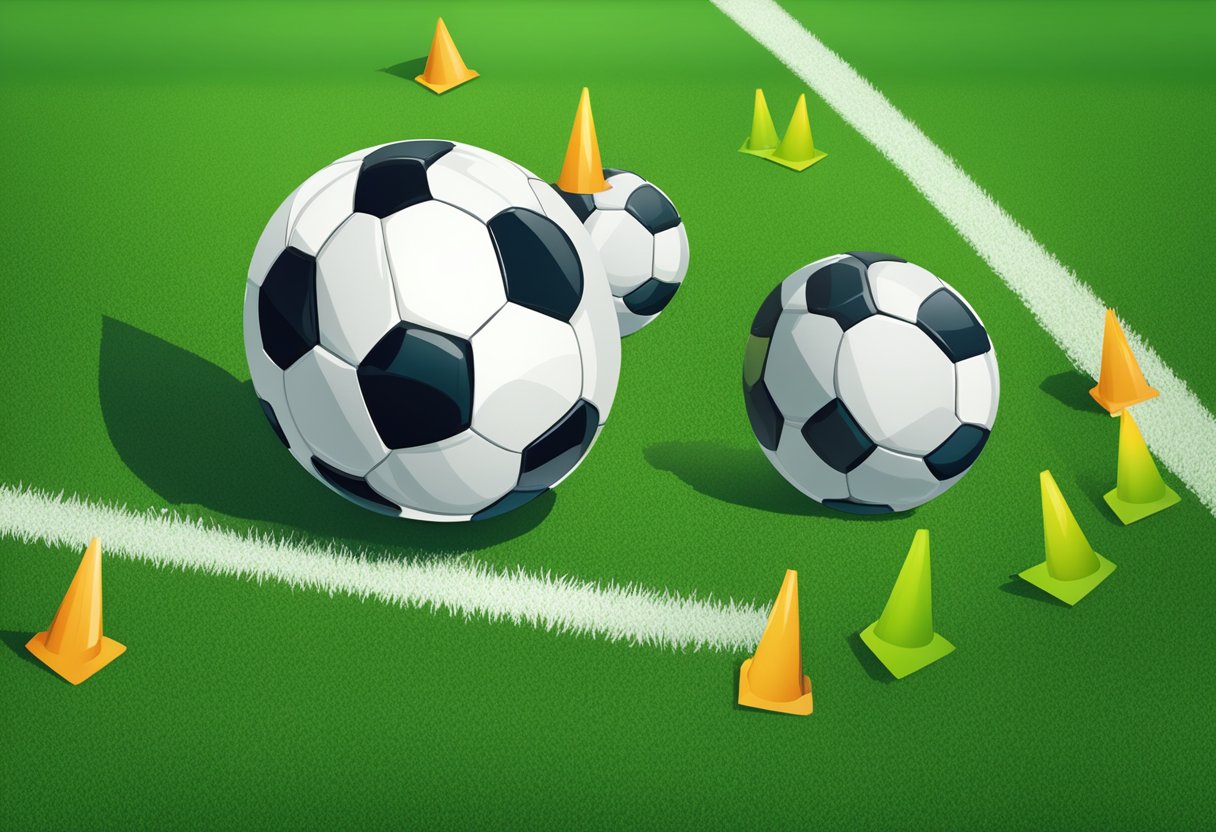
As a beginner, it is important to start with the basics of dribbling before moving on to more advanced techniques. Here are some dribbling drills to help you improve your skills:
Straight Line Dribbling
This drill involves dribbling the ball in a straight line, using both feet. Start by dribbling the ball with your dominant foot and then switch to your non-dominant foot. Try to keep the ball close to your feet and maintain control while dribbling.
Zigzag Dribbling
In this drill, set up cones in a zigzag pattern and dribble the ball through them. Use both feet and try to keep the ball close to your feet while changing direction. This drill will help you improve your agility and footwork.
You can read more about Zigzag dribbling by reading this article by Soccer Xpert.
Circle Dribbling
Set up cones in a circular pattern and dribble the ball around them. Use both feet and try to keep the ball close to your feet while maintaining control. This drill will help you improve your dribbling skills in tight spaces.
Cone Dribbling Drills
Set up cones in different patterns and dribble the ball through them. Use both feet and try to maintain control while dribbling. This drill will help you improve your dribbling skills in various situations.
Remember to practice these drills regularly to improve your dribbling skills. With consistent practice and hard work, you can become a skilled dribbler in no time!
Dribbling in Different Positions
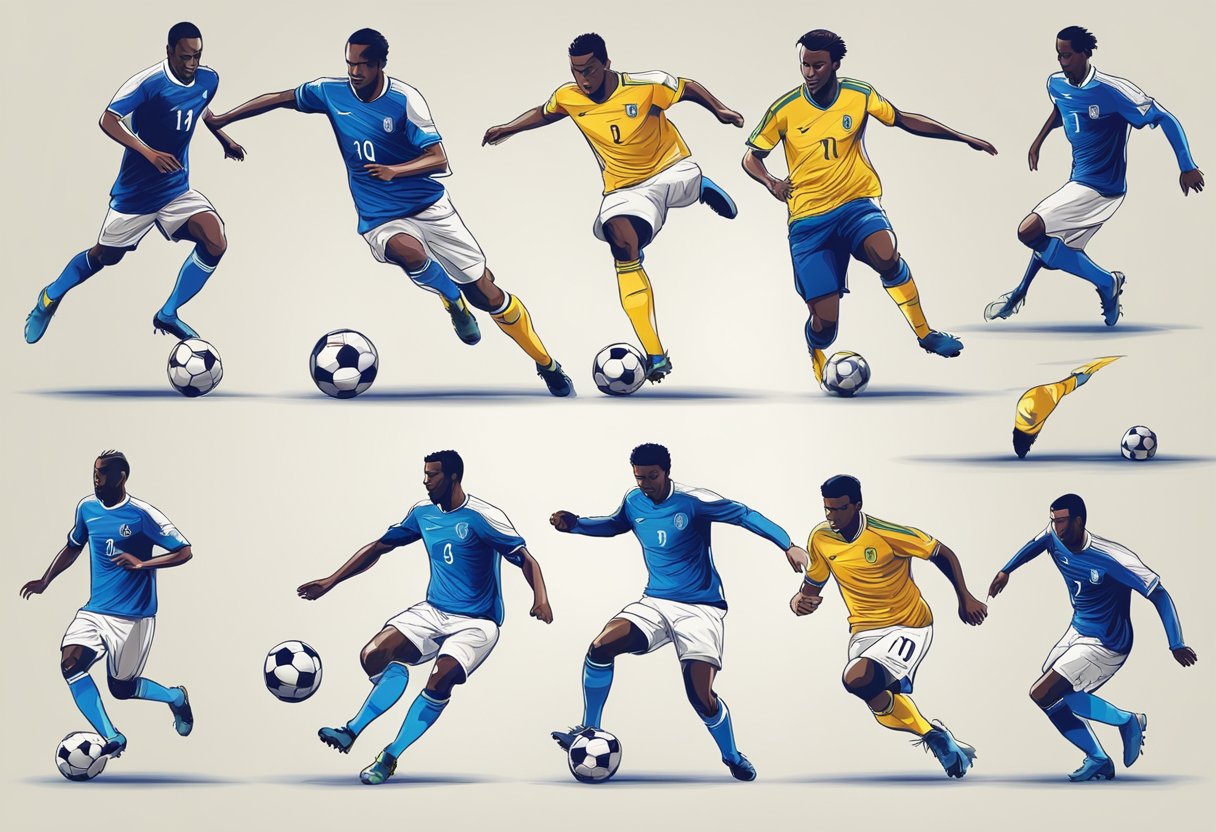
As a beginner, it is essential to understand that dribbling is a crucial skill in soccer, regardless of the position you play. However, the way you approach dribbling may differ depending on your position on the field. In this section, I will discuss dribbling techniques for forwards/strikers, midfielders, and defenders.
Dribbling for Forwards/Strikers
Forwards and strikers are primarily responsible for scoring goals, and dribbling is a vital tool in their arsenal to get past defenders and create scoring opportunities. As a forward, it is crucial to have excellent close control of the ball, quick feet, and the ability to change direction quickly. Some tips for forwards and strikers include:
- Keep the ball close to your feet while dribbling
- Use feints and body movements to deceive defenders
- Look for gaps in the defense to exploit
- Practice shooting with both feet to increase your options
Dribbling for Midfielders
Midfielders are the engine room of the team, and they are responsible for both attack and defense. For midfielders, dribbling is a crucial skill that allows them to carry the ball forward and create scoring opportunities for their team. Some tips for midfielders include:
- Use your peripheral vision to keep track of your teammates and opponents
- Look for spaces to exploit and gaps in the defense
- Use one-touch passes to keep the ball moving quickly
- Practice dribbling with both feet to increase your options
Dribbling for Defenders
Defenders are responsible for stopping the opposition from scoring, but they also need to be able to carry the ball out of defense and start attacks for their team. Dribbling for defenders is all about being able to keep the ball under control and make safe passes to teammates. Some tips for defenders include:
- Keep the ball close to your feet while dribbling
- Look for safe passing options rather than trying to beat players
- Use your body to shield the ball from attackers
- Practice dribbling with both feet to increase your options
In conclusion, dribbling is an essential skill in soccer, regardless of your position on the field. By practising the techniques outlined in this section, you can improve your dribbling skills and become a more effective player.
Common Mistakes in Soccer Dribbling
Over Dribbling
One of the most common mistakes that beginners make when dribbling is over-dribbling. This is when a player takes too many touches on the ball, which slows down the attack and gives the opposition time to regroup. Over-dribbling can also lead to losing control of the ball and being dispossessed by the opposition. To avoid over-dribbling, players should focus on taking fewer touches on the ball and moving it quickly.
Poor Ball Control
Another common mistake that beginners make when dribbling is poor ball control. This is when a player struggles to keep the ball close to their feet and loses control of it. Poor ball control can lead to turnovers and missed opportunities. To improve ball control, players should practice dribbling with both feet and keep their heads up to scan the field.
Incorrect Body Positioning
Incorrect body positioning is another common mistake that beginners make when dribbling. This is when a player leans too far forward or backwards, which can affect their balance and control. Incorrect body positioning can also make it easier for the opposition to steal the ball. To improve body positioning, players should keep their weight centred over their feet and maintain a low centre of gravity.
Overall, soccer dribbling takes time and practice to master. By avoiding these common mistakes, beginners can improve their dribbling skills and become more effective on the field.
Dribbling Tactics and Team Strategy
Smart dribbling complements a team’s tactical system and formation. Coaches should encourage dribbling that:
- Progresses play upfield
- Isolates weaker defenders
- Relieves pressure on defense
- Creates space for other attackers
- Draws fouls in the attacking third
Discourage aimless over-dribbling, attempts with low success probability, and moves that slow play and relinquish possession in vulnerable areas.
Dribbling with purpose integrates seamlessly into an offensive game plan.
Equipment and Gear for Optimal Dribbling
Quality equipment enhances a player’s dribbling technique. Consider:
Soccer Cleats
Models with thin uppers promote a feel for the ball. Avoid heavy leather boots. Lightweight synthetics with grip enhance control.
The Ball
A ball suited to the surface that isn’t too light or over-inflated encourages clean manipulation. Carry your match ball to practice.
Surfaces
Dribbling on uneven grass develops adaptability. Indoor flats promote precision. Seek a variety of surfaces.
Equipment matters because it impacts touch, grip, speed and overall dribbling style. Test boots and balls to determine optimal choices. Care for your gear as well.
Preventing Dribbling-Related Injuries
As an explosive change of direction skill, dribbling carries some injury risks to knees and ankles. Some prevention tips:
- Maintain proper form – stay low and balanced
- Build strength in legs, core and hips through training
- Use quality equipment – poor traction causes slips
- Properly warm up before intense dribbling
- Avoid overtraining repetitive moves
- Treat natural grass surfaces for divots and holes
- Tape or brace vulnerable joints if needed
- Allow time to fully rehab strains before returning
With preparation and gradual progression under guidance, dribbling safely minimizes injury. Don’t attempt moves beyond current capability.
Frequently Asked Questions About Soccer Dribbling
Let’s address some common questions players have about improving their dribbling:
How much should I practice dribbling?
10-15 minutes of focused dribbling drills during training sessions, 2-3 times per week yields steady improvement. Avoid overtraining the same moves.
What are signs my dribbling needs work?
Frequent loss of control, heavy touches, lack of change in direction, and predictable moves indicate the need for dedicated practice.
Is it possible to become an elite dribbler later in life?
With intense training, major gains are achievable but peak dribbling prowess typically requires development from a young age. Mastering advanced moves by 18 is ideal.
Are fancy tricks worth learning?
Basic moves have higher utility. Master fundamentals before flashier tricks. Use tricks sparingly against specific defenders. Entertainment value shouldn’t outweigh retention.
How do I know when to dribble vs pass?
If you have space and isolated defenders, attack. If heavily marked, scan for passing options. Decision-making improves with game experience.
Quality repetition, video analysis, coaching, and self-evaluation will answer most questions that arise during skill development.
Wrapping Up
Dribbling is a multifaceted soccer skill requiring technique, speed, creativity, and smart decision-making. Mastering advanced moves opens up attacking options, but only with a foundation of ball control and awareness.
Training must be tailored to individual strengths and roles on the pitch. Stick to the tactics of your team system. Aim to move the ball into dangerous areas instead of meaningless trickery.
With passion and diligence, any player can become an adept dribbler capable of unlocking defenses. Soccer greats are proof hard work pays off. So grab a ball, practice your close control, and attack defenders with confidence.

